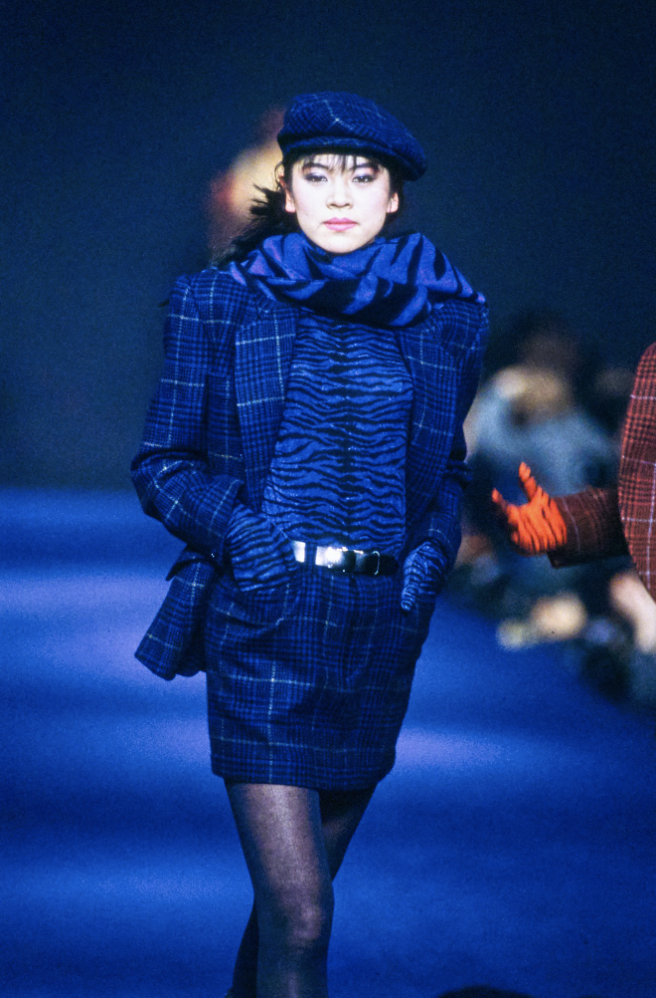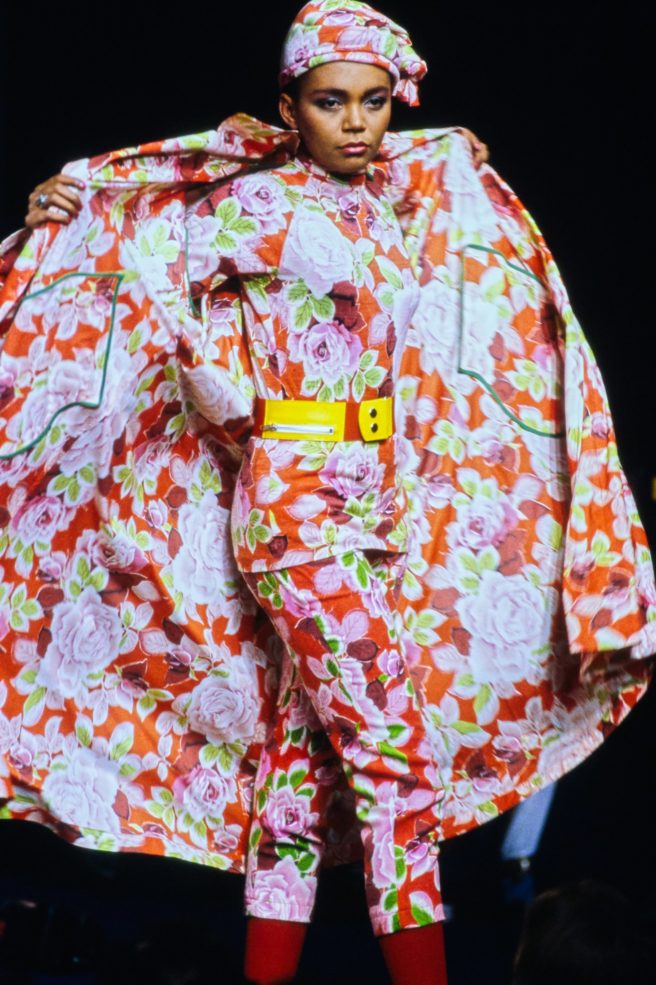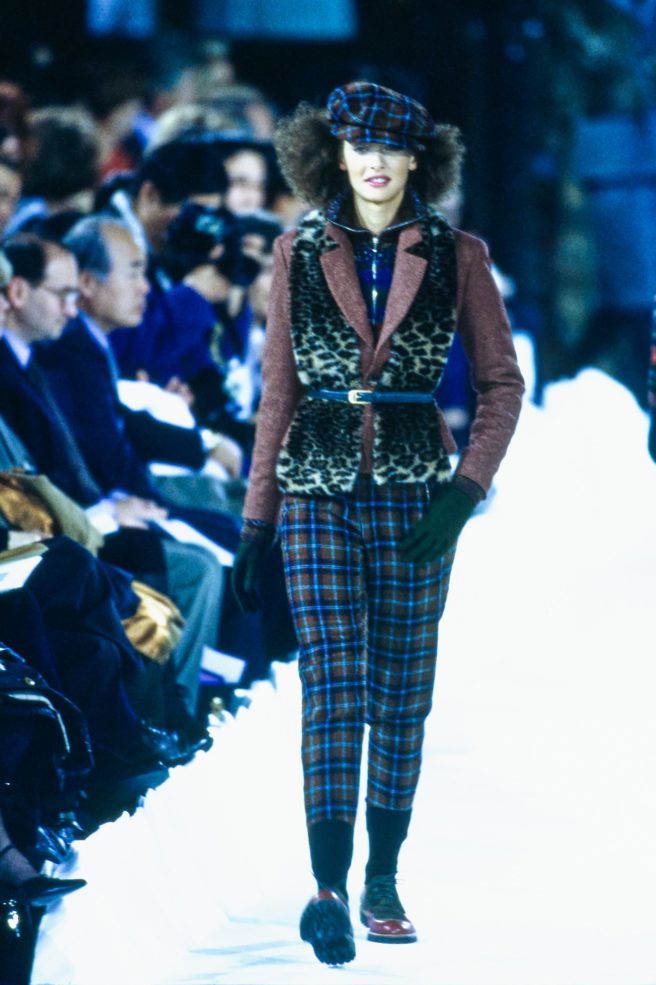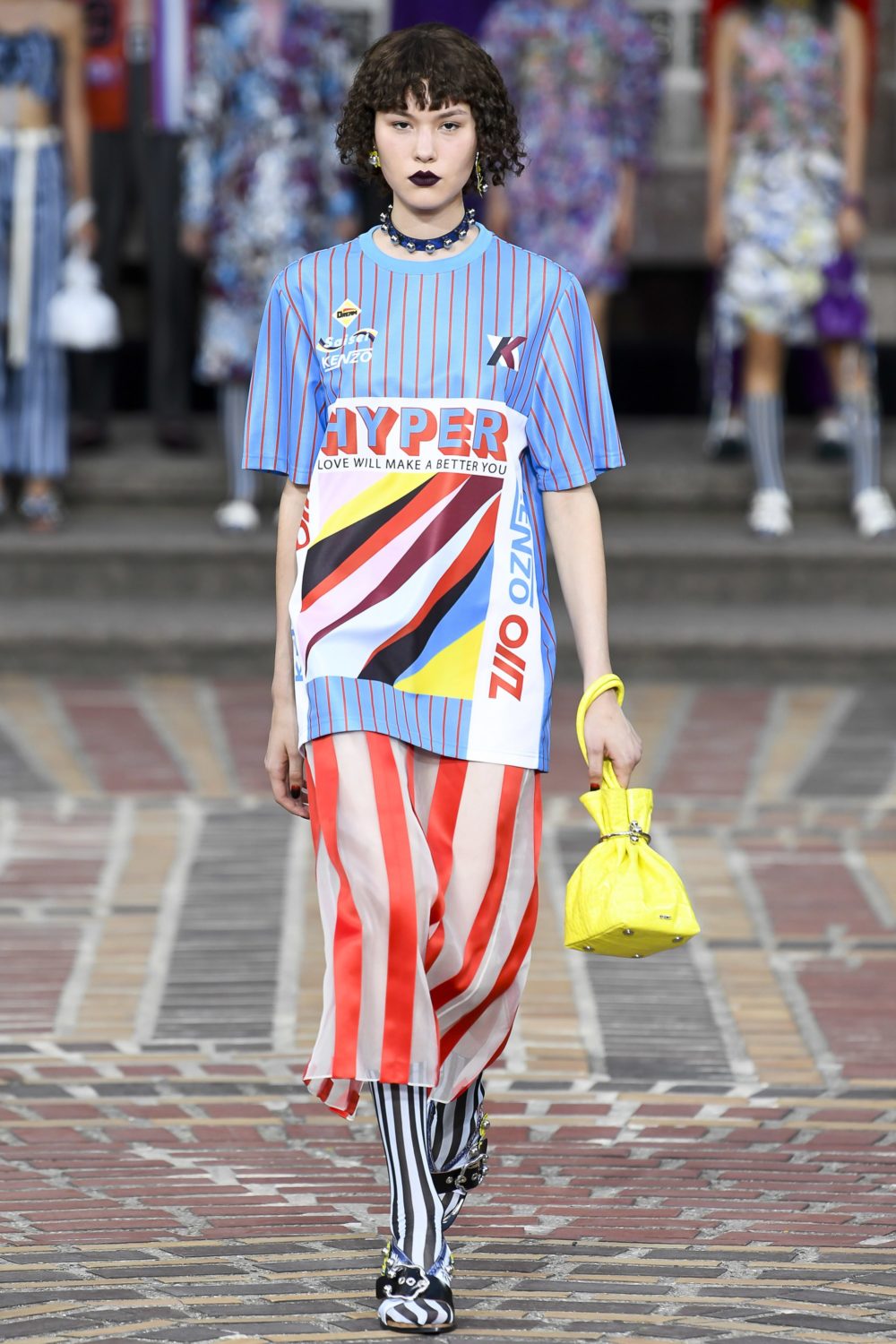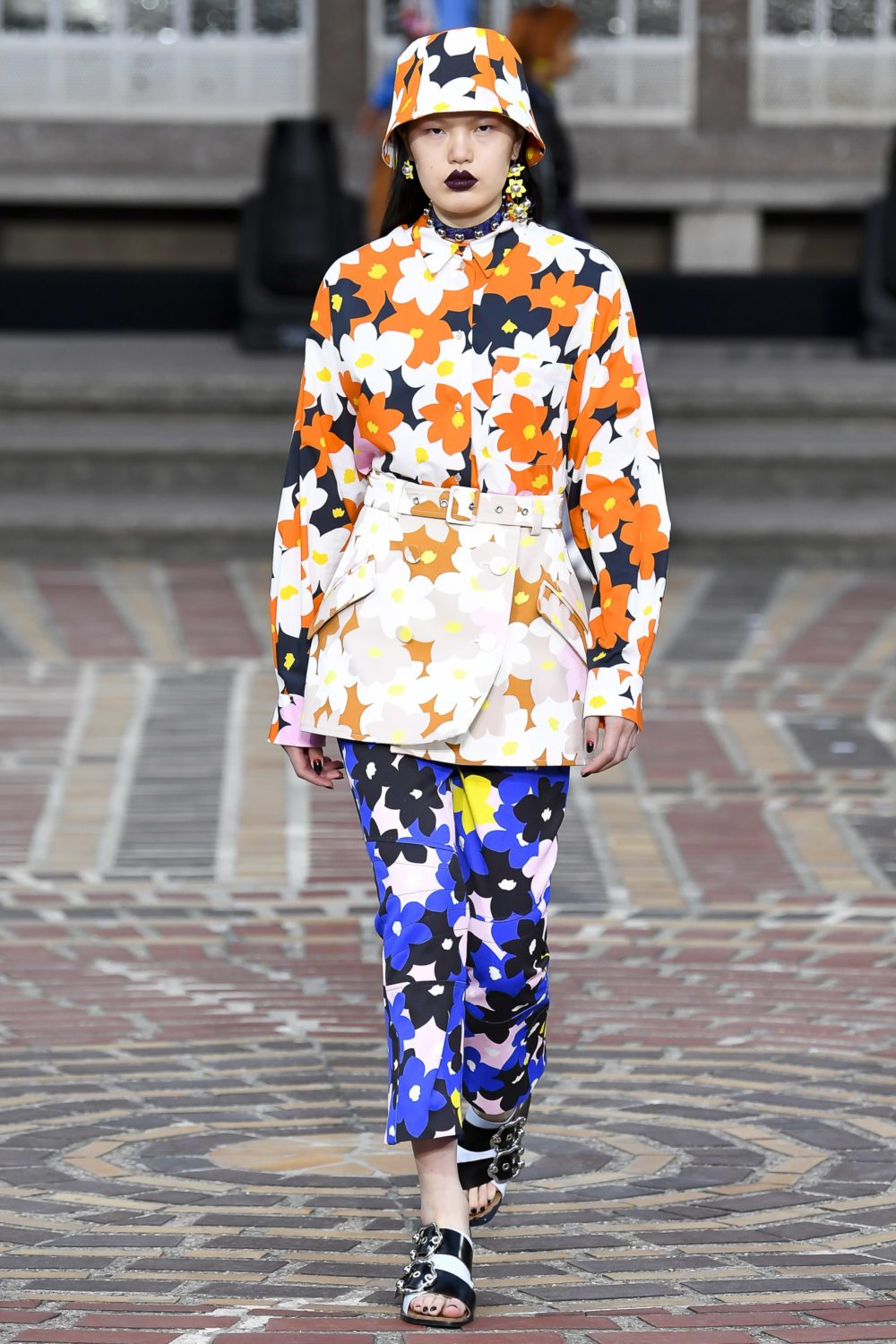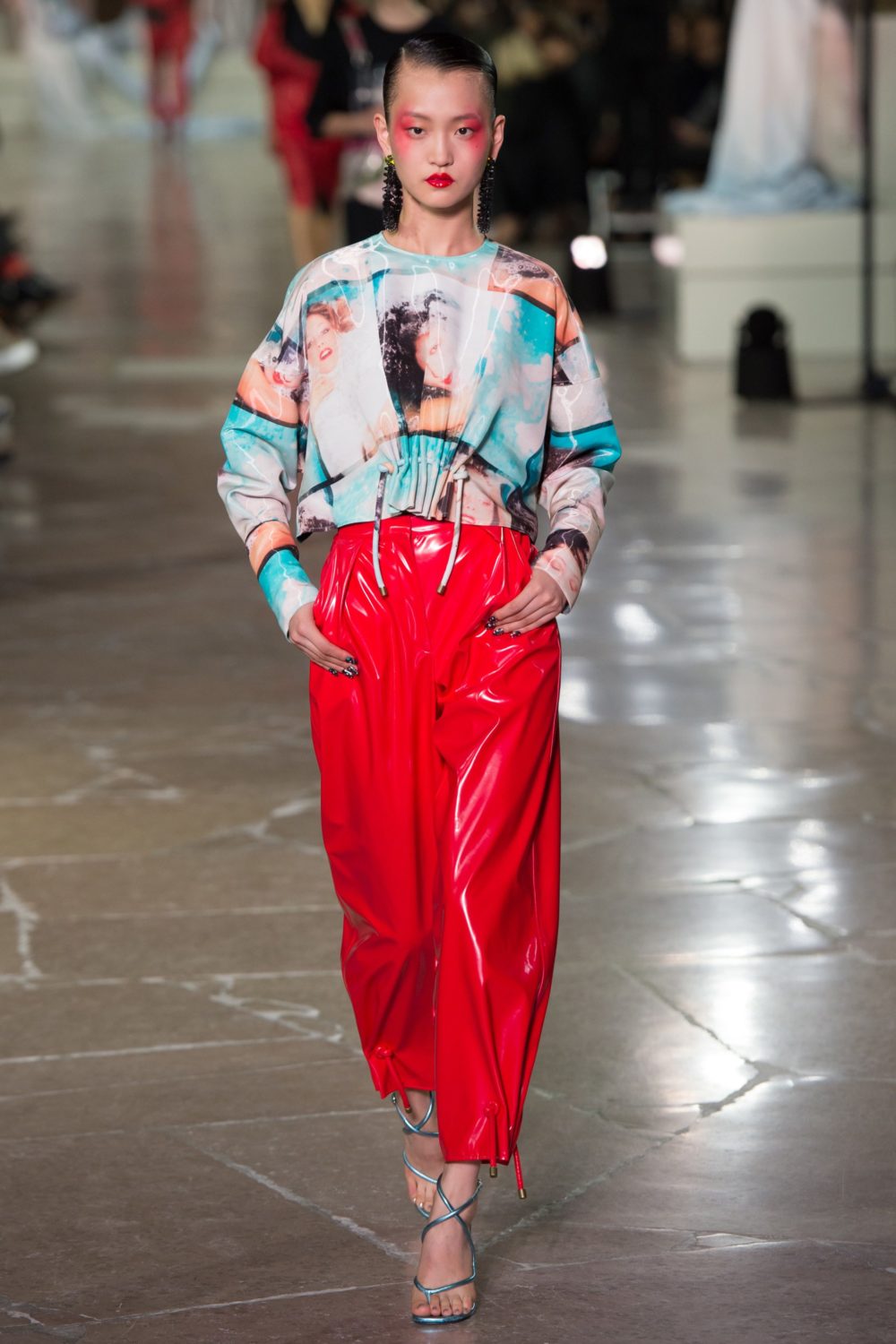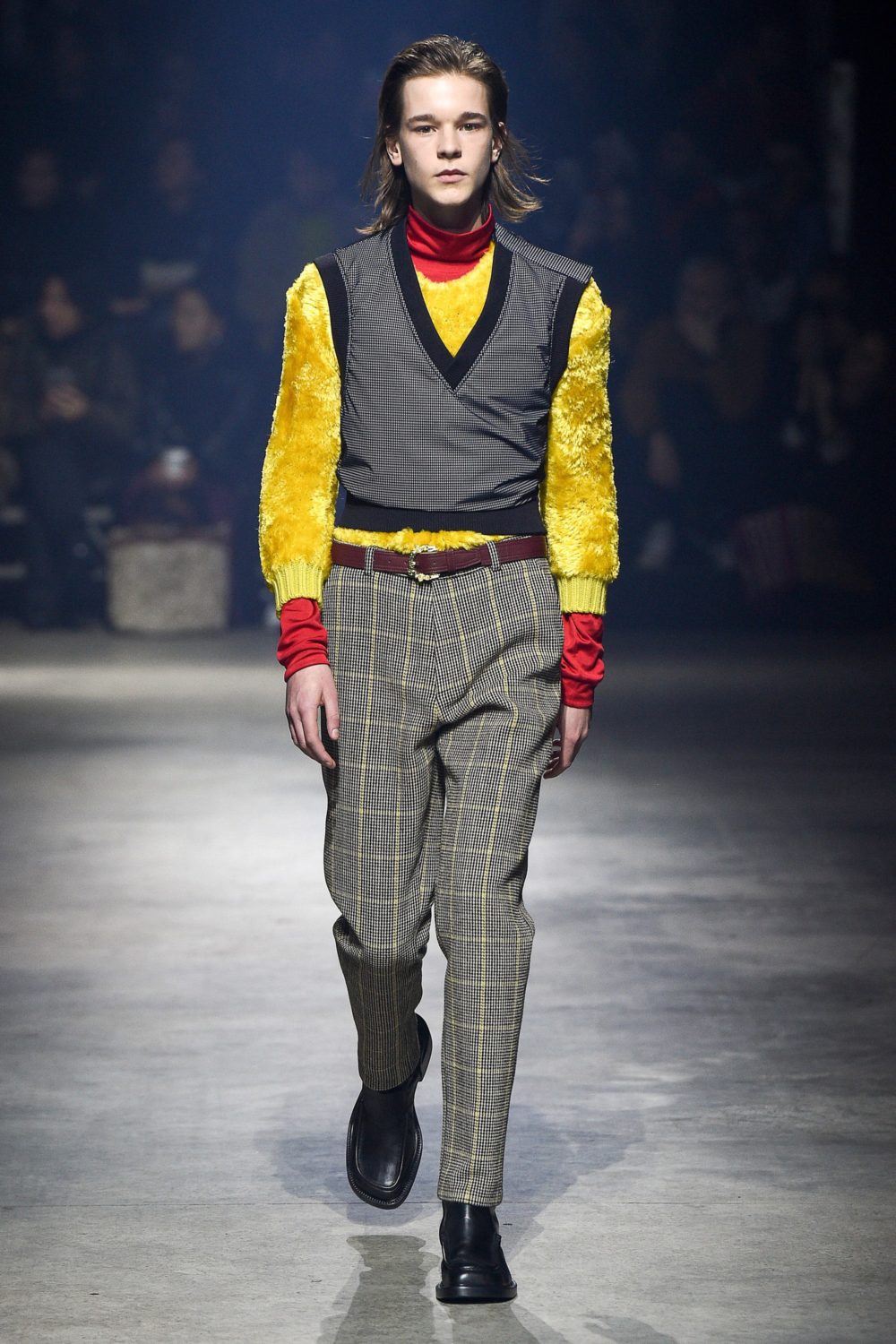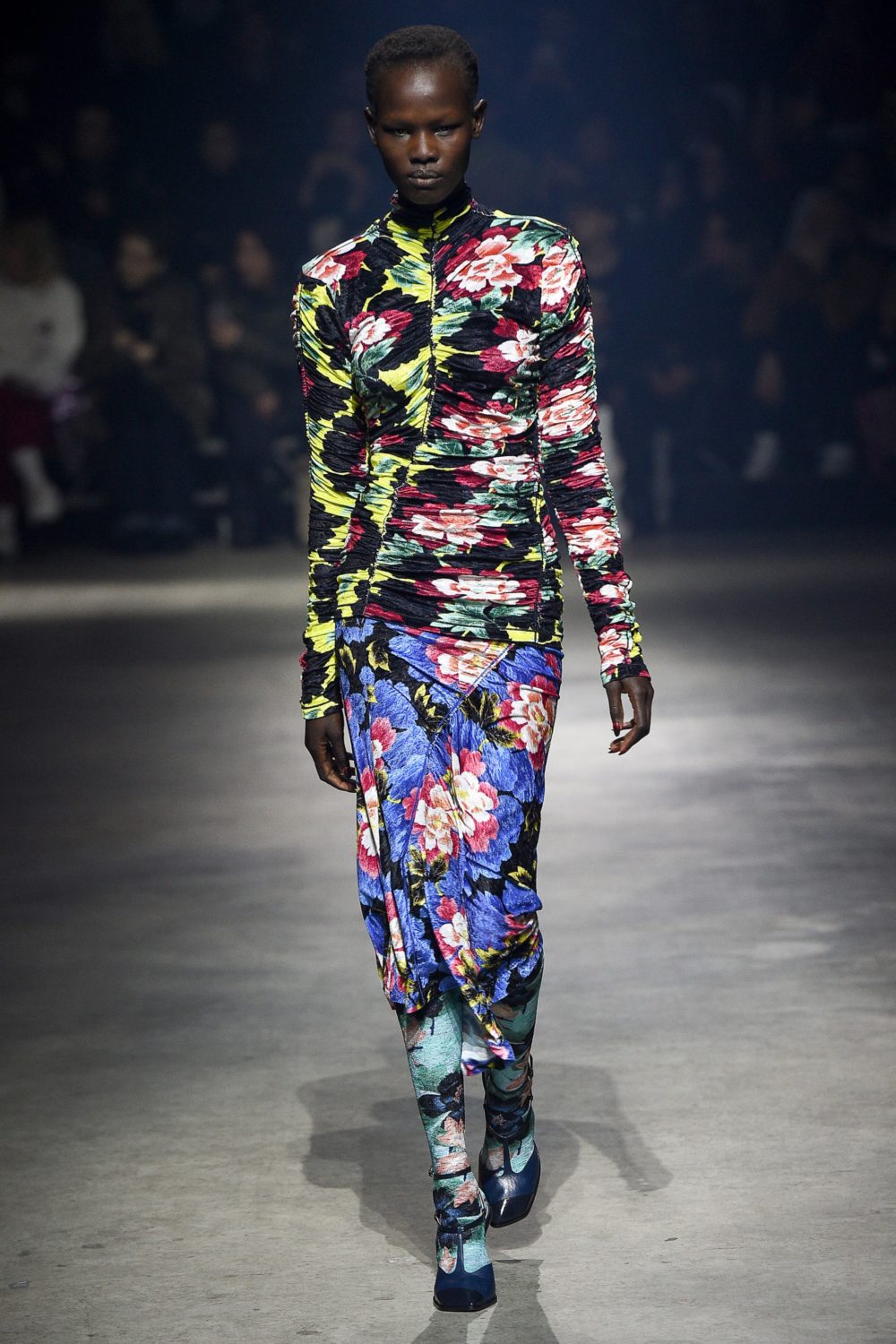Fashion Industry Broadcast and Style Planet TV is proud to present its new 11 part, hour long Film docuseries “Renegades”. As a teaser before the 11 films are released, we are revealing a post on THE BROADCAST each week for the next 11 weeks. This week the story is on Kenzo Takada.
Our Renegades refused to follow the laws of the ‘fashion rulebook’. The dreamers, the rebels, the auteurs, without whom popular culture would never have been quite as interesting. Even if you hold only the most casual interest in the world of fashion, it’s hard to deny the fascinating life stories of every one of our Renegades.
Featuring the lives and legends of:
- Alexander McQueen
- Yohji Yamamoto
- Rei Kawakubo
- Issey Miyake
- Kenzo Takada
- Malcolm McClaren
- Vivienne Westwood
- Jeremy Scott
- Rick Owens
- Hedi Slimane
We present to you: KENZO TAKADA

At a time when Parisian fashion was relegated to the elite, Japanese import Kenzo Takada stirred the established code of couture by cheekily breaking the rules and ushering in the notion that design need not take itself so seriously in order to be enjoyed. With his keen eye for bold and vivacious colours, eclectic and multi-cultural patterns; and a flair for the theatrical that turned every collection into an eagerly awaited extravaganza, Takada injected fashion with a sense of joyous wonder that echoes through to designers of the modern era.
Born in 1939 in a small village within the city of Himeji, Takada was the fifth of seven children in his family. His childhood was complicated and with good reason: he suffered from dyslexia at an early age, and oral expression remains a challenge for him until this day. “I feel as if I don’t know how to speak, Takada has said – and yet Takada is a man who has amplified the means of expressing oneself through fashion.
Takada’s love for couture developed as a child when he would regularly read his sister’s magazines. As a young man, he followed the wishes of his parents by attending the University of Kobe to study literature – only to disappoint them by dropping out and enrolling in Tokyo’s Bunka Fashion College, becoming the first male student to ever be admitted.
“University … was not my thing,” he recalled years later, although the same could be said of his early experiences at Bunka College. He hated his first year of design, feeling woefully under qualified: “When I entered the school of design in Tokyo, I felt I was beneath everything! I wasn’t at that level. I couldn’t understand everything.”
But he persevered and after graduating, worked for a department store in Tokyo and later for a magazine. But Takada had higher aspirations, and in 1965 he followed the advice of his old college lecturer, traveling to Paris by boat with the desire to become a fashion designer and discover a world outside the strict confines of Japan.
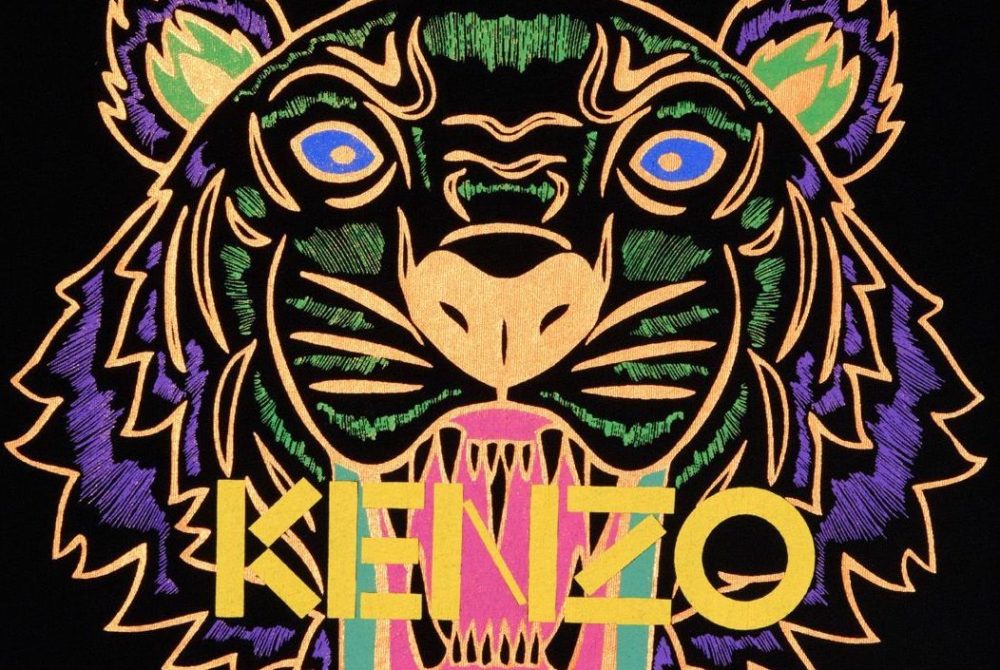
It was a bold gambit: Takada knew no one in the country, spoke limited French, and was essentially without a dollar to his name; he was forced to call upon his mother for support several times before she eventually cut him off. Early life in Paris, certainly, was far from the waking dream he had envisioned in Japan. He sustained himself by working as a freelance designer, sketching images and creating his own pieces.
His destitution in unfamiliar surroundings proved to be a blessing in disguise. The only fabrics he could afford in those early days came from flea sales, and so the burgeoning designer was forced to mix a multitude of bold materials, combining scraps he found in Paris with those he had preserved from Japan to form singular garments. It was an inspired combination of artistic dexterity and multi-cultural aesthetic that would come to define the Kenzo label.
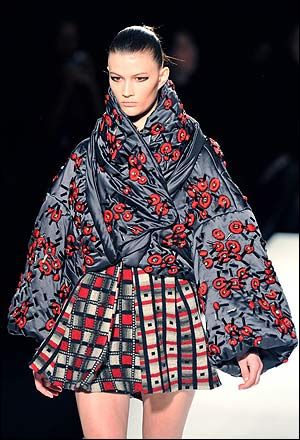
His Japanese influences, so prominent in his designs, came primarily from memories of his mother: “I was fascinated by mother. She was omnipresent, and incredibly elegant in the kimonos she wore so well.” There were two types of kimonos in Japan during the early seventies: simple and very strict, or magical and colourful. Takada chose to exploit the latter in his designs, fusing the foundations of the kimono with traditional Western tailoring to create pieces truly unique in their inspiration.
But the true spirit of the Kenzo label lay in the man himself, and the bubbling sense of joy and enthusiasm he held for the world around him.
Takada describes his stint in Paris as “crazy years for me,” working tirelessly through the day and partying endlessly of an evening. On recalling his friendship with designer Loulou La Falaise he said, “I think for a period of two years, we went out together every night. Whenever we went, we danced til dawn! I just love to dance and to laugh!”
It was a light-hearted temperament the disillusioned Paris youth would latch onto in the coming years, weary of the selectivity that came from traditional couture and desperate for a sensibility they could identify with.
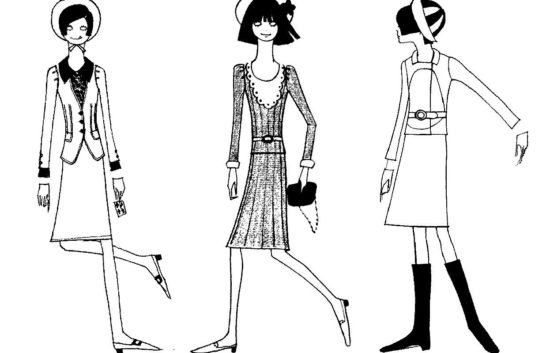
After months working as a freelance designer, Takada’s first big break came through a series of sketches inspired by Andrè Courrèges, a revolutionary French fashion designer renowned for his futurist vision; of the 30 designs he created, five were sold to the wife of Parisian designer Louis Feraud.
Takada eventually found work as a company designer in Paris, and after several years of experience decided it was time to establish his own store. He opened his first boutique in 1970, establishing his namesake label Kenzo the same year – a fitting blend of “East meets West” aesthetic that mirrored his experiences as a Japanese expatriate in Paris.
The boutique, Jungle Jap, was set up in an unkempt clothing store in the famous Galerie Vivienne. Takada renovated the store singlehandedly and even allowed it to play host to his very first show. While the term “Jap” is commonly recognised as a derogatory word within the Japanese community, Takada reclaimed the word for his work, intending to redefine the slur by relating it to something beautiful.

Over the next decade, Takada ushered in a new paradigm of Parisian fashion. At a time when the historic couture houses of Dior, Yves Saint Laurent and Chanel dominated French fashion with their “bon chic, bon genre” exclusivity and institutional values, Takada injected a universal perspective on fashion that emphasised inclusion and enjoyment.
His understanding of the zeitgeist and cheerful, eclectic, idiosyncratic take on modern dressing cleared a pathway to prominence. Paris youth flocked to the bold new designer, who quickly became known for inexpensive collections that resonated with vibrancy and wonder – a direct contrast to the haughty couture of his esteemed competitors.
“I love the idea that Kenzo first introduced that fashion could be fun,” said the future creative director of Kenzo, Antonio Marras. “That fashion is creativity and not a status symbol; that fashion is freedom. It was a bold message about creativity and energy, global fashion and universal culture. He broke into the fashion world and made it change, preparing the future for others.”
Indeed, Kenzo was one of the first labels to introduce “ethnic-chic” to the streets and embrace cultures beyond the traditional West. Recognising that the French found “exotic” elements to be appealing, Takada drew inspiration from ethnic cultures around across the globe – beginning with his roots in Japan, to Russia, Machu-Pichu and even the Czech territory of Bohemia.
Over the course of four decades, Kenzo collections have combined a stunning array of countries and cultures into single collections: Scandinavian knits with Mexican rebozos and Romanian peasant skirts; oriental designs complimented by Portuguese purses and awning stripe shirts and dresses that evoke the French Riviera. The label has experimented with North American feather detailing, North African kaftans, Eastern European peasant apron and smokes and the Indian Nehru suit while squeezing in nods to American pop culture and even an ode to prohibition gangster Al Capone. To say that Takada is diverse would be a profound understatement.
When asked about his search for inspiration and love of travel, Takada responded, “I don’t go around looking for influences. The energy arrives.” This may be true, but the designer is a self-professed observer; spending copious amounts of time “people watching” and studying shop windows when he arrived in Paris, as a means of understanding the Parisian culture and youth. His keen perception, paired with an ability to harmonise styles from across the globe, made it possible for Takada to penetrate the entrenched fashion hierarchy and become one of the most regarded fashion designers for over three decades.
“Kenzo stands for freedom,” says Marras. “No limits in inspiration, all influences from every part of the world are welcome. No limits in shapes and volumes. That means freedom of movement thanks to no-couture patterns and kimono shapes. No limits in the vision; no dream is too far away, too crazy or visionary.”
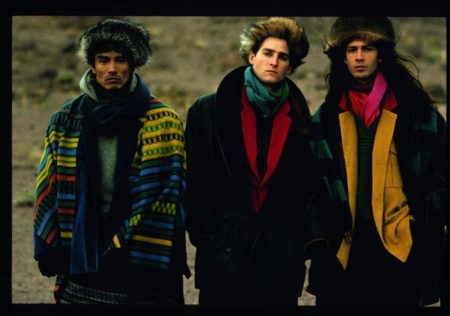
In 1983, Takada released his first men’s collection; three years later he dubbed a collection “Around the World in Eighty Days,” despite already being the preeminent traveler of fashion for over a decade. His fashion pallet has remained endlessly multicultural and syncretistic, filled with ethnic outbursts, flamboyant colour combinations and audacious prints.
He continued to develop his label in subsequent years: expanding into children’s wear and home collections in 1987, followed by fragrances for men and women in 1988 and 1991, respectively, and the launch of skincare line Kenzoki in 2001.
Takada imbues each of his lines with the same limitless wonder and theatricality he extends to his catwalk shows, a highlight of the fashion calendar for over thirty years. Every collection was an extravaganza, from the 1979 show in a circus tent, closing with women in transparent uniforms riding on horseback and Takada himself atop of an elephant, to his final show in 1999 – a prêt-à-porter showcase commemorating his thirty-year carer with a stadium celebration that included an enormous Kenzo retrospective showcased by many of the world’s most famous models.
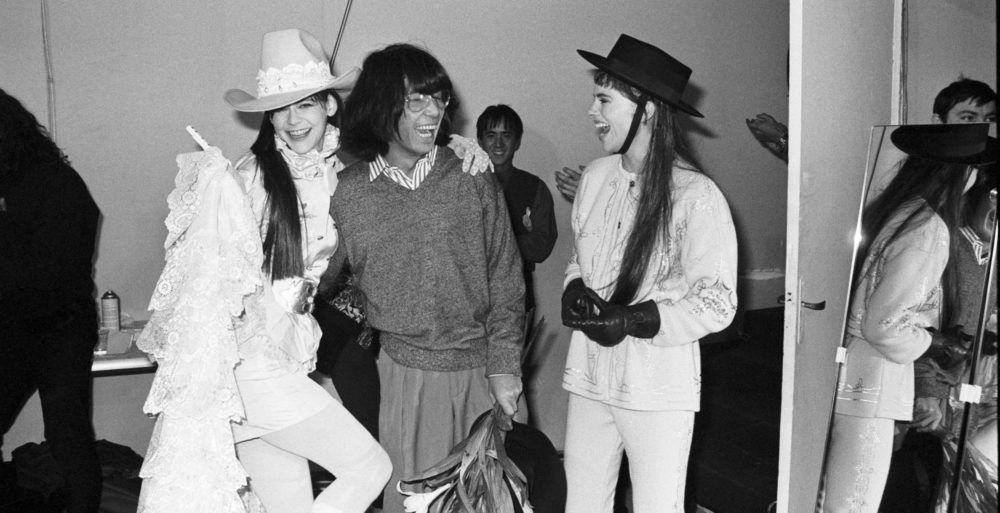
Like so many revolutionary designers, his success can be attributed to a refusal to follow the direction of temporary trends, in the spirit of a true renegade. “When you’re forced to react to trends that you are not very close [to] … it imprisons,” Takada has said. His resolve was to stay true to himself, and this is exactly how he approached the fashion scene – imbuing haute couture with colour, joy and an open freedom of expression that so closely resonates with his personality.
In 1993, French luxury goods company LVMH acquired Kenzo; six years later, Takada retired from his namesake label to pursue his artistic aspirations, leaving his esteemed fashion house in the hands of his assistants.
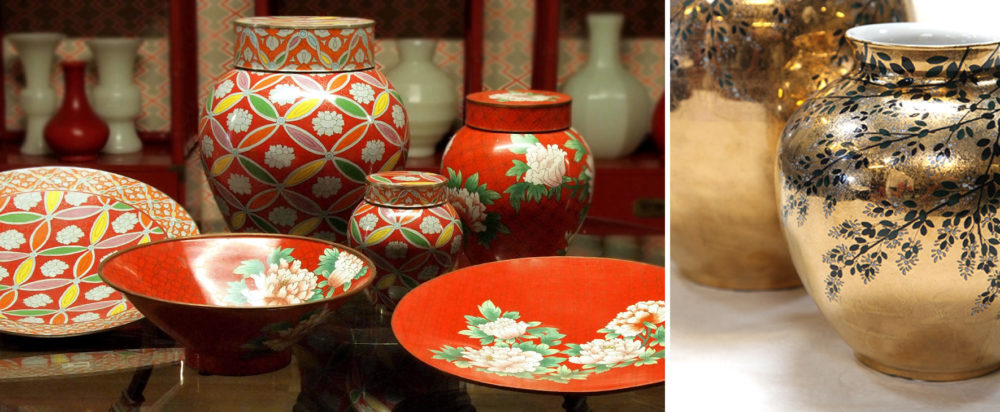
Takada returned to the public eye renewed and reinvented, with his 2005 launch of Gokan Kobo. “The studio of the five senses” was a new form of design offering unique home furnishings. In 2017 Takada broke into a collaboration with Roche Bobois, to reinvent their signature icon. The legendary Mah Jong sofa was the result! Rather than a cultural note, its namesake was to intend its ability to mix and match the sectional pieces, that feature Takada’s own fabrics from his Nogaku Collection, a kimono-like jacquard material. The design meets Japanese tradition with Takada’s modern vision to combine comfort with fantasy. The French Luxury house whom have links to Christian Lacroix, Sonia Rykiel and Jean Paul Gaultier, courted Takada for several years before securing his commission on the sofa and a line of homewares which have achieved critical success.
Meanwhile, Kenzo had undergone an important transition announcing Antonio Marras as the new artistic director of the house in 2003, and his eventual rise to creative director in 2008. Kenzo moved in a more polished and feminine direction under the guidance of Marras, breaking away from its street wear roots. As Marras explained during the transition:
“The Kenzo collections are a meeting point where opposite elements melt together to create something unexpected and beautiful. I’m writing the new pages of Kenzo, and I’d love this anniversary to mark a new phase towards modernity. My vision is deeply linked to my being Italian, a love for beautiful fabrics and timeless elegance. But this is not opposite to the Kenzo spirit – it is just another element to melt into its very rich history.”
These “new pages of Kenzo” failed to ignite public interest and in 2011 Marras announced his departure from the label. He was replaced by the dynamic duo of Humberto Leon and Carol Kim, founders of cult US clothing store Opening Ceremony. The new creative directors were determined to bring back the energetic, fun and high-spirited Kenzo that Takada originally envisioned, making the brand relevant again through their own street-led sensibilities.
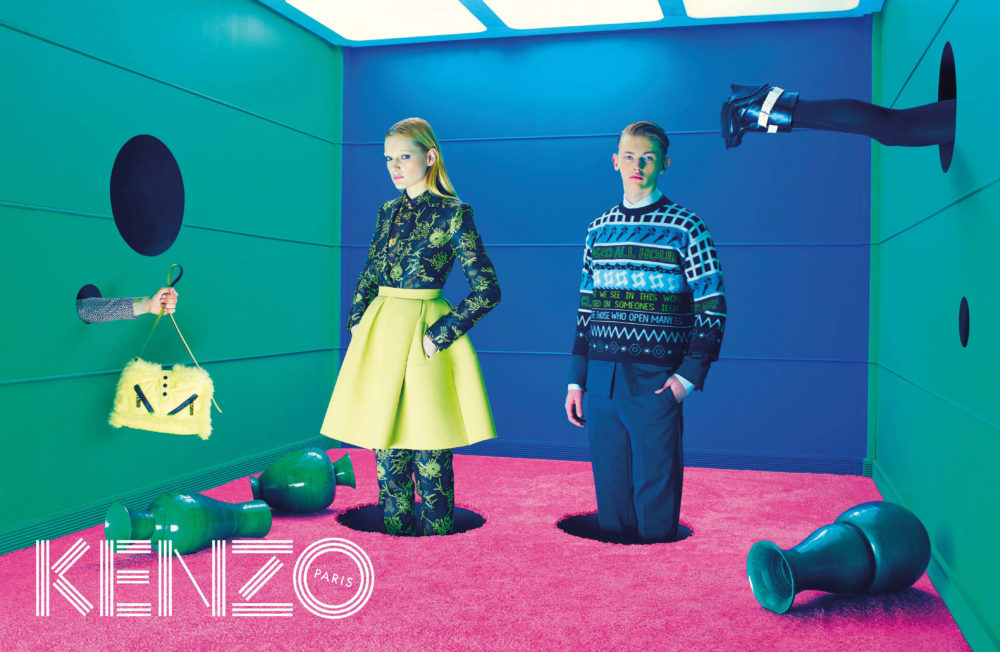
A year after their appointment, Leon stated:
“Kenzo, as a brand, has such a rich and fascinating history, it can be hard to determine what exactly we have changed. With our new collections, we hope that we have injected the brand with a youthful spirit and a sense of fun and cheekiness. But we also want to respect and preserve the traditions of the Kenzo house, such as the importance of prints and the sense of worldliness and travel that has been intrinsic to every collection in the history of Kenzo.”
Under Leon and Lim, Kenzo has become more involved in the artistic elements of design – collaborating with avant-garde artists, musicians and actors with each new collection. In their fall showcase of 2014 they worked with filmmaker David Lynch, who mixed the soundtrack for the show and provided a large sculpture of his own design, and have even worked with luxury water company Evian to design Kenzo bottles – hardly a surprising move for the designers who, at Opening Ceremony, collaborated with everyone from Martin Margiela to the Muppets.
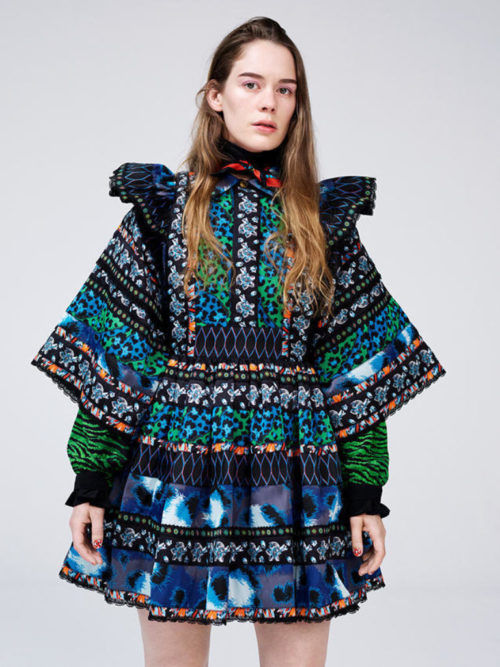
In 2018 they have teamed up again with youth fashion giant H&M. The Kenzo cross H&M collection received a lot of buzz ahead of its November drop. Among other ambassadors the campaign includes Norwegian musician Anna of the North featured in folkish ribbon dress with psychedelic prints. Ribbons were a signature detail of their founding designer who in a recent tome, incorporated images of his archive of ribbons collected over his career.
It coincides with the release of the self-titled 2018 memoirs, Kenzo Takada. In which the somewhat nostalgic designer considers his own contribution to the world as he traces back his path from a keen-eyed young designer in 1965, right up to his final runway show in Paris. Remarking “I think I bought liberty to fashion, in how clothes are worn, how they are moved in, the colours”; defining that freedom which pertains to the Kenzo woman whom were enabled by the beauty and movement of his designs. The pages are decorated with over four decades of sketches, photos and designs and includes an unseen photographic essay of his seminal work, an iconic wedding gown from his 1982 Autumn/Winter collection.
Despite stopping for reflection, Takada manages to maintain his working relevance, collaborating with Avon on a new scent Avon Life in 2016 and more recently Avon Life Colour. For Takada it is not a sell-out, rather a partnership of sense; with the accessibility of Avon aligning neatly to his own values, having said “It follows what I initially did in fashion, trying to democratise great products”. Released under his own name, the deal is a separate entity to Kenzo Parfums which has been owned by LVMH since Takada’s stepping down. The initial launch broke all sales records for the company, remarkable considering they are already the third largest player in the fragrance market in the top 15 countries where Avon is present. Given this, Avon are undertaking an aggressive digital campaign for the new fragrance, as well as securing an activation with the man himself during Paris Fashion Week, whom also made time to attend the Spring Summer ’18 show for Kenzo.
It was a particularly personal presentation for the designer, with his successors paying tribute to Sayuko Yamaguchi, one of the world’s first Asian supermodels and incidentally Takada’s personal muse. The all Asian casting was a progressive masterstroke for the boys whom still managed to maintain diversity by its inclusion of models from Japan, China and Korea. The duo continues to reference the founder and his impact on the brands new direction, with the Fall ’17 La Collection Momento taking influence from the archives. Skipping the runway in favour of a dinner party at La Monnaie de Paris, which was reinvented into a tropical Jungle. Momento was an ode to Takada’s love of “The Dream” by the master “Le Douanier” Rousseau, models were like walking foliage and potted plants bringing the painting to life. Leon’s and Lim’s strategy is to capture experiences in fashion, moments that disrupt the traditional format with the flair and showmanship of Takada himself. In line with this, Momento was presented at New York Fashion Week as a film entitled “The Everything” directed by co-artistic director Humberto Leon and starring a stellar cast which included actress Milla Jovovich.
Kenzo Takada took to film as well, performing a short visual for the Buenos Aires-Based Film collective 1985 and Landia, whom captured the artists in a unique portrait which centered around the artists’ hands and their ability to create.“The hands of a person will tell you his secret – or not. The hand is the tool of the soul. They say a lot about who we are. This is Mr Kenzo Takada. Who are you?”
So much could be said to define the genius of Kenzo Takada, but what is left will be a legacy that remains entrenched in every designer with a penchant for colour and flair: from street wear devotees to those who dwell in the loftiest realms of haute couture. His supernatural trajectory paved the way for a wave of Japanese designers to like him, make their mark in Paris and inspire the rest of the world with Eastern sensibilities. Even his successors, Leon and Kim, owe a substantial debt to the man whose vibrancy and eclecticism changed the way the youth perceived high fashion.
But for the man who redefined dour and elitist couture as something to be adored, it was the work, never the accolades that sustained his joy:
“It pleases me when people say I have influence. But I am influenced by the world that says I influence it. The world I live in is my influence.”
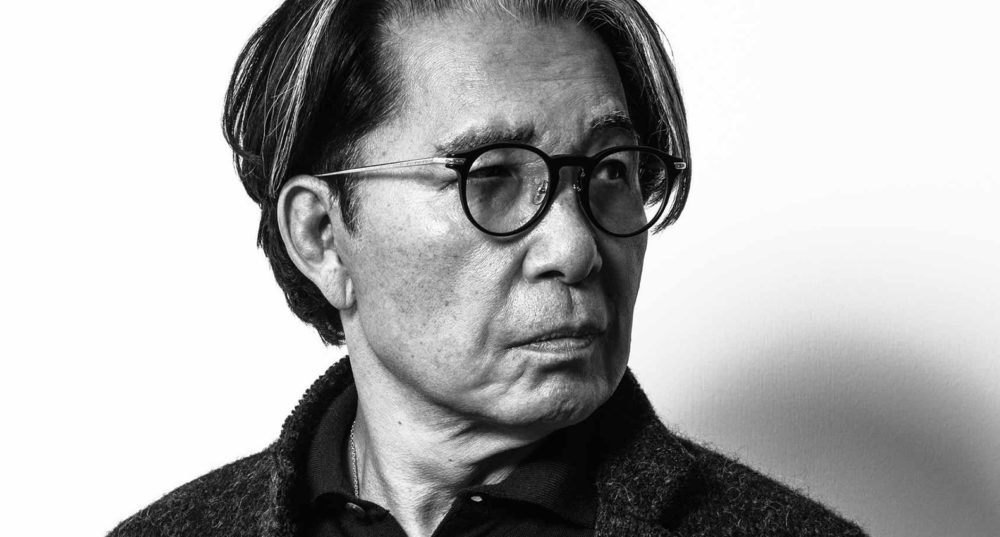
Check back every Tuesday for the latest teaser for FIB and Style Planet TV’s newest docuseries, Renegades.
Written by: Charlie O’Brien
Edited by: Jess Bregenhoj

